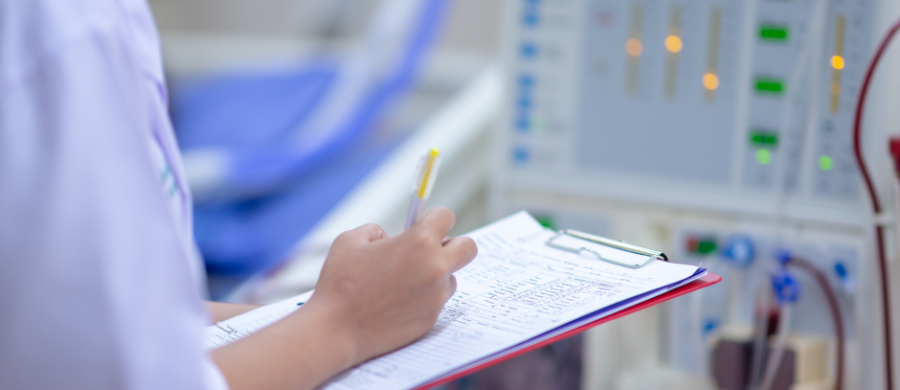When it comes time to start hemodialysis, among many other questions, the question of vascular access – AVF or PermCat (or more simply fistula or catheter) invariably arises.
In this article, we will try to look at this choice from all sides in order to give patients the most general idea and to facilitate their choice as much as it is possible to talk about it.
Fistula (AVF): Let’s start with the fistula, because of the two options, building a dialysis fistula is definitely the better option.
The fistula is easier to handle, maintain, less affects the daily routine, way and quality of life of the patients.
It is also much less risky in terms of future infections.
What exactly is an arm fistula?
Here we will try to avoid medical language and explain in an easily accessible way what a fistula in general is a “splicing, fusion” of a vein and an artery of the arm, which is a medical manipulation under anesthesia.
A small incision is made around the wrist or a little higher up the patient’s arm, depending on the doctor’s judgment – this is the so-called “high” (around the bend of the elbow) or “low” (around the wrist) fistula, the vein and
the artery is “merged”, then they are sutured and a certain period is waited for the fistula to heal and work. This may take a month, even two, and it may not work at all – these are precisely the risks of fistula. As for the location – whether the fistula is high or low, it is better if it is low – next to the wrist. The reason for this lies in the fact that if something happens to this fistula and it stops functioning, it can then “walk” up the arm and make a new one. Unfortunately, doctors rarely decide to make low fistulas, perhaps due to the fact that the vessels are much better expressed in the upper part of the arm, accordingly, it is easier to work there and the chances of success are greater.
Fistula positives:
– reduced risk of infections to a minimum
– preserved quality of life and routine
– you can swim, do any kind of work, without, of course, heavy physical work and strain.
Maintenance of daily hygiene occurs without change – as it was before the onset of the disease.
– among the positives, it is important to mention that what worries the patients, namely – pricking with fistula needles for each dialysis – will be painful – no!
The place loses its sensitivity and no pain is felt when it is turned on.
Of course, there is a moment of discomfort, but it is by no means an extremely painful manipulation.
Disadvantages of fistula:
– Time.
Each fistula takes time to develop and become usable, sometimes over two months.
There is a risk that it will never develop, ie. to remain unusable. This is one of the main concerns of hemodialysis patients – how will I continue my treatment if my fistula doesn’t work?
Fistula is not an option for patients who have high values and need to be put on dialysis quickly or urgently.
But, being the best option for vascular access in general, our advice to such patients is to get a catheter but at the same time seek advice from their dialysis center to refer them to a good vascular surgeon to do the fistula. In this way, the necessary dialysis treatment will be started through the catheter, but it will be thought in the perspective of building a good fistula to be used for the patient’s hemodialysis needs in the future.
– another common negative is the sudden stoppage of the fistula.
The reasons for this could be many and varied, but often the culprit is again high blood pressure, left unchecked – it causes the vessels to constrict and the fistula to spontaneously close.
Such an unexpected event puts the patient in an extremely unpleasant, stressful situation where suddenly, without warning, he finds himself with absolutely no vascular access through which to perform dialysis.
In such a case, of course, a temporary / permanent catheter is immediately placed and a new option for fistula construction is sought again. – “Why do they advise me not to make a fistula, but to go directly for a catheter?” – here is an extremely common question from patients. Usually the explanation from doctors is that the patient’s vessels are not good, he is too old, or he has diabetes.. This is not the case. Anyone could get a nice, quality, working fistula.
The trick is to find a good enough specialist to do it for him. We return to infections again to mention how risky they are for hemodialysis patients. When the treatment, the medical staff at the dialysis center are up to standard and professional, patients with fistulas can be absolutely calm that they are not vulnerable to infections introduced into their body.









